SatkaMapMarch 4–5, 2015 A fairly mediocre monument sign marks the turnoff to the city of Satka. 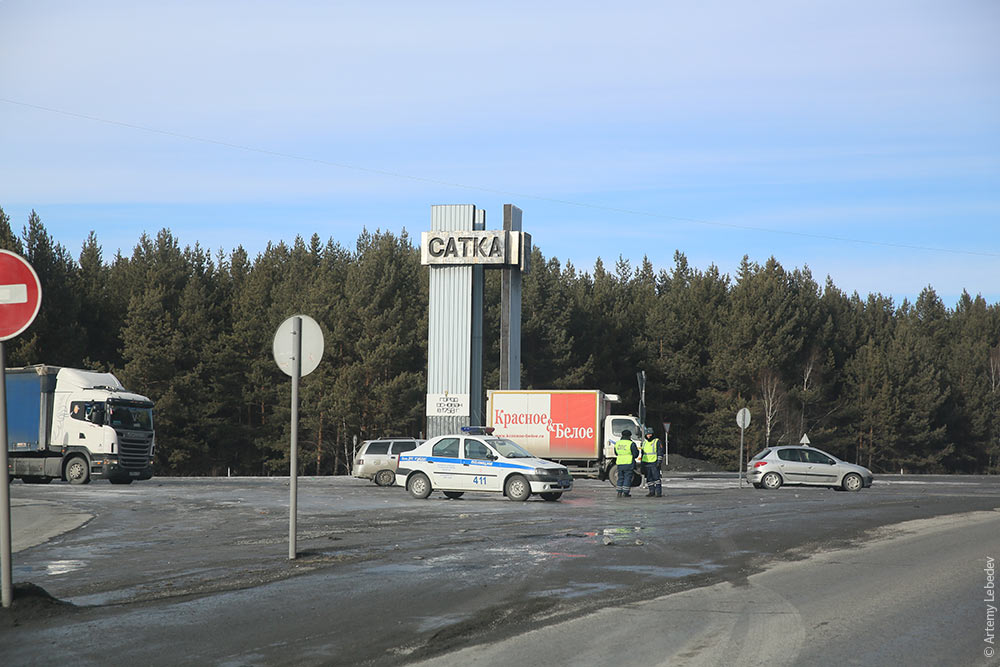 Satka. City founded in 1758. The road promises nothing.  The Zyuratkul Water Reservoir acts as an ice reservoir during the winter. 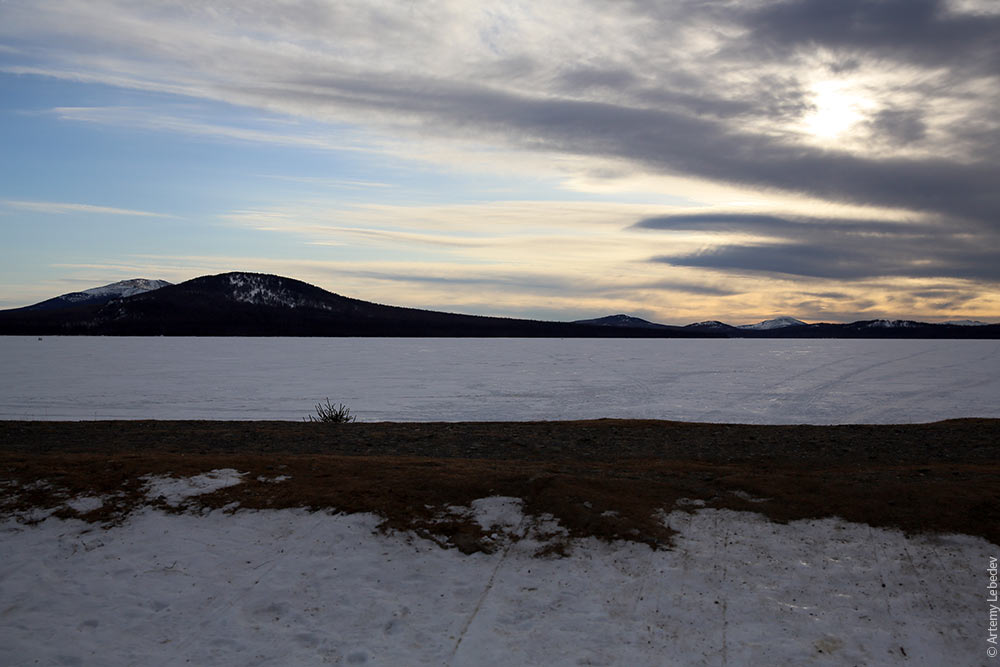 The city begins. 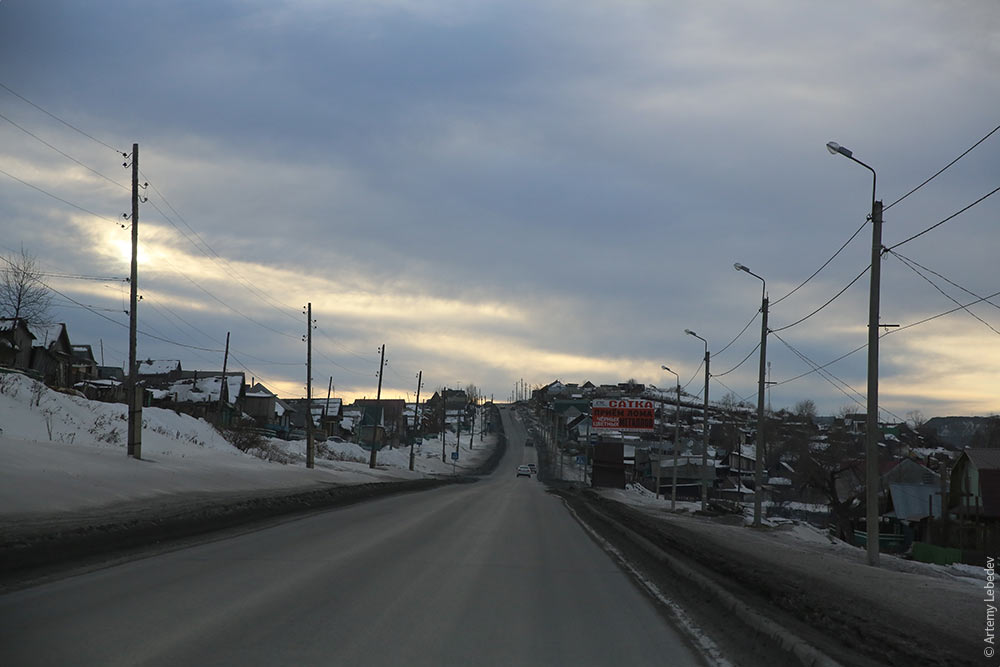 Half of Satka looks like a village. 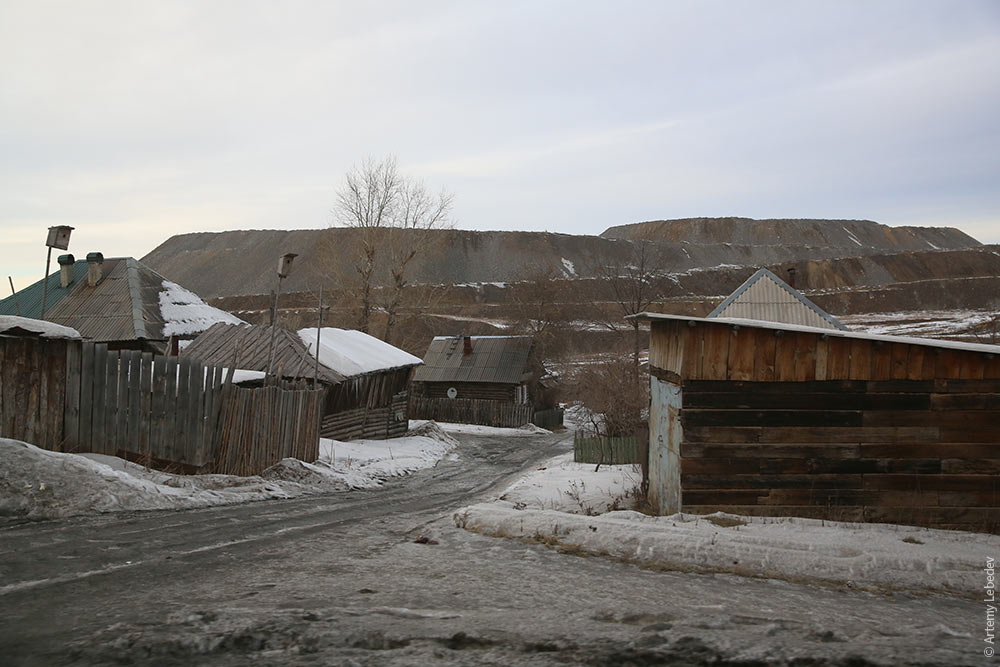 But it would be unwise to draw premature conclusions. 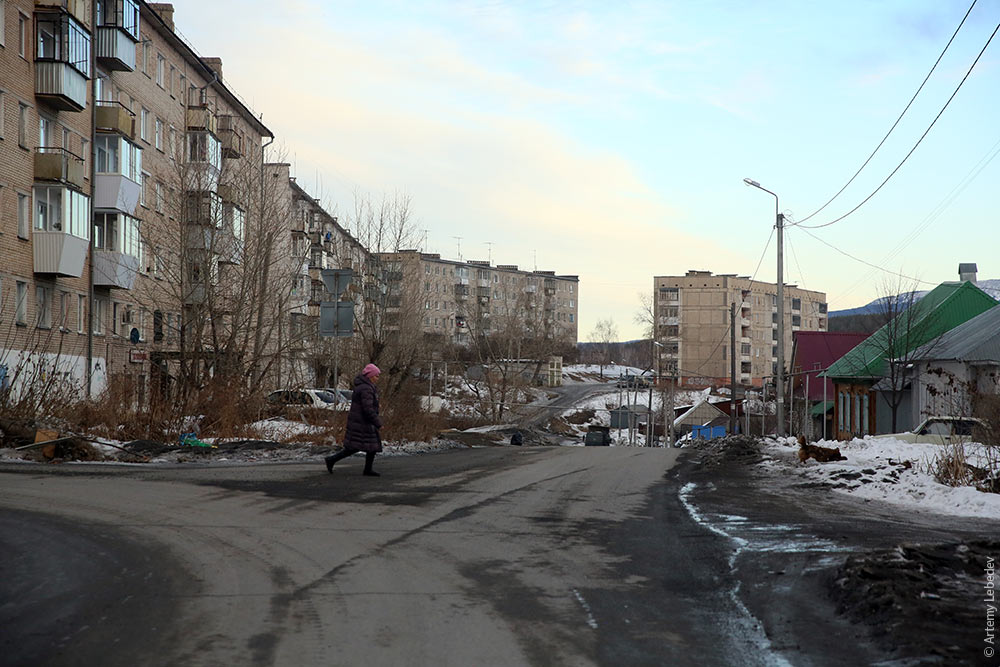 There are still some wonderful pre-revolutionary buildings here, deftly camouflaged with hideous contemporary advertising. 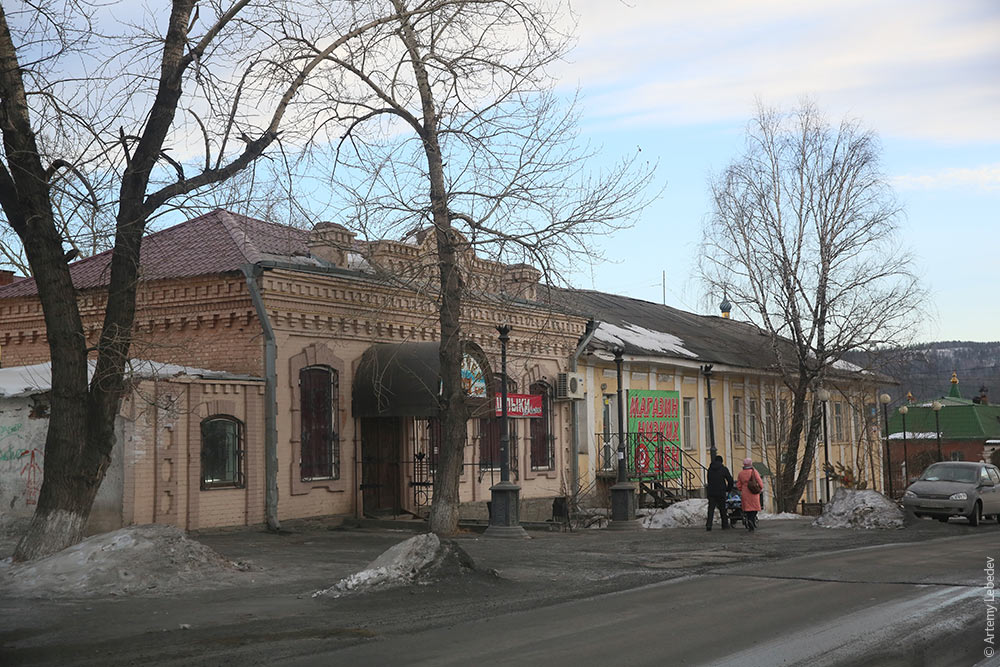 Even the original decorative rooftop fences remain intact in some places. 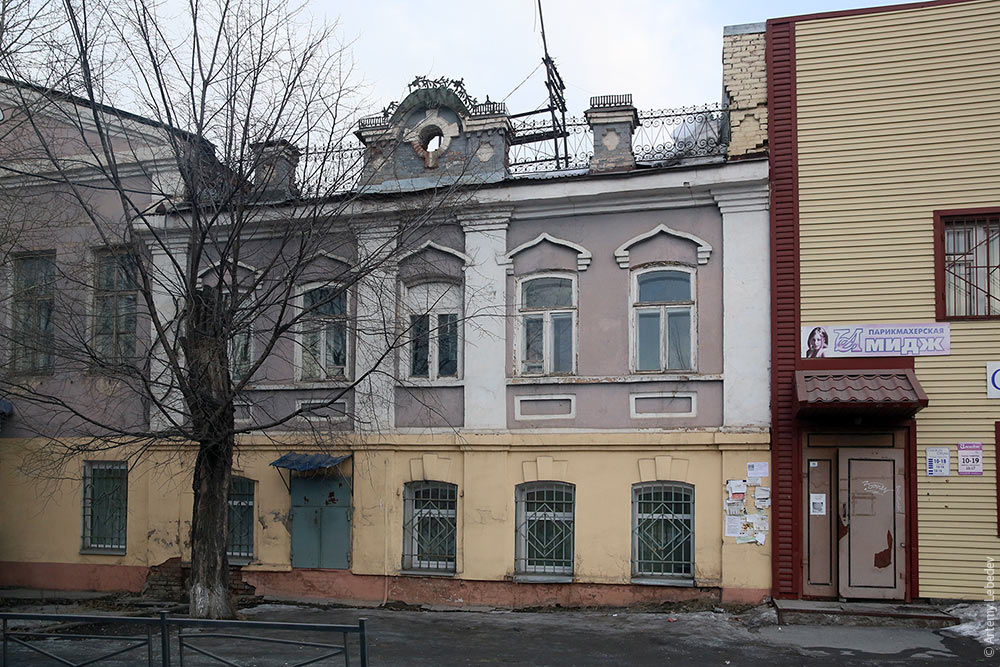 Some buildings have been preserved particularly well for future generations: they’ve simply been covered up with cheap siding. This is the most barbaric approach in terms of aesthetics, but essentially the most humane in terms of archaeology.  The Satka Pond, created in order to build a state ironworks and metallurgical plant, occupies the very center of the city. 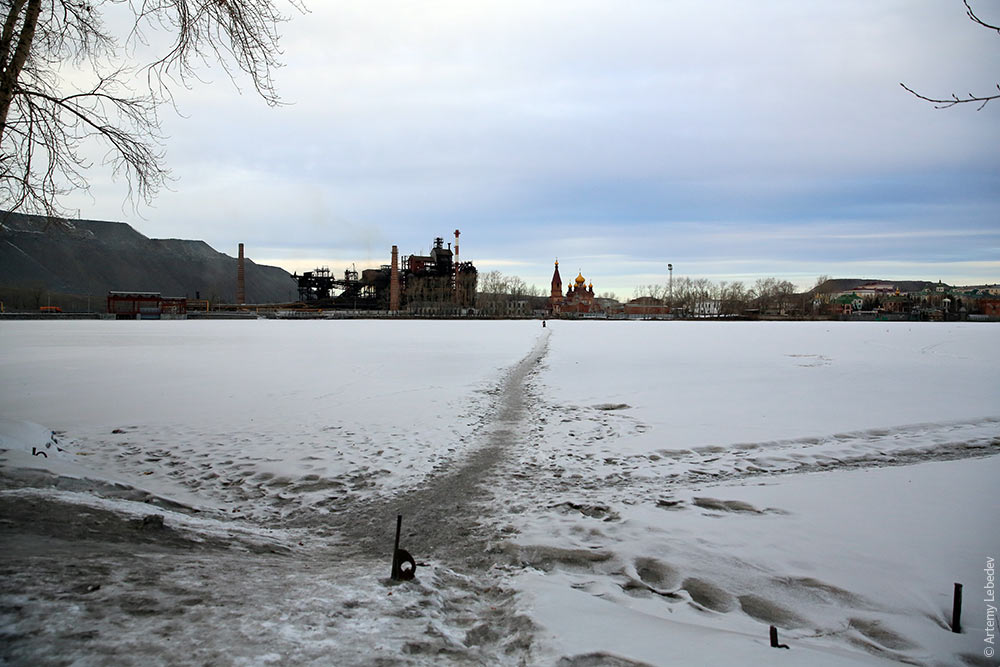 This is where you’ll find the Sonkina Laguna Entertainment Complex, a place that’s crammed full of all sorts of things: it has bears, a plane, motorcyclists on pedestals, stucco reliefs, a beach, a barbecue, a hotel, a water park, a submarine and everything else that would be the last thing you’d expect to see in the middle of the Urals. 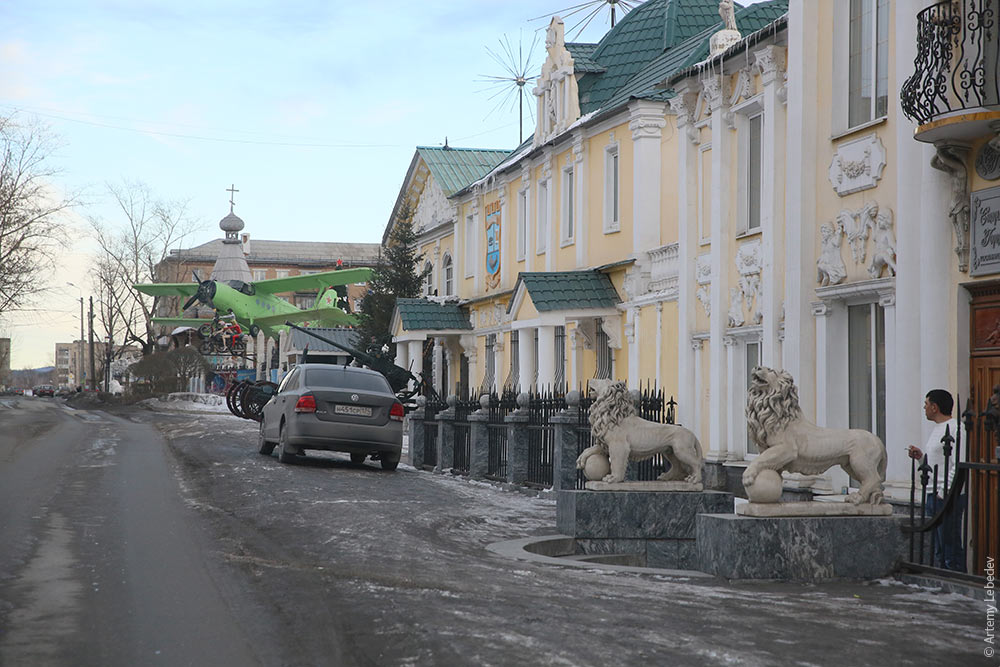 The smokestack with the inscription “1917” looks great together with the monument in front of the factory.  A curious detail has survived on both the smokestack and the ornamental part of the factory fence: a crossed hammer and sledgehammer. This symbol remains alive today: it’s used on Russian road signs to indicate working days. And in 1918, following the establishment of a workers’ and peasants’ state, the hammer and sickle appeared. So it wasn’t just invented out of thin air. 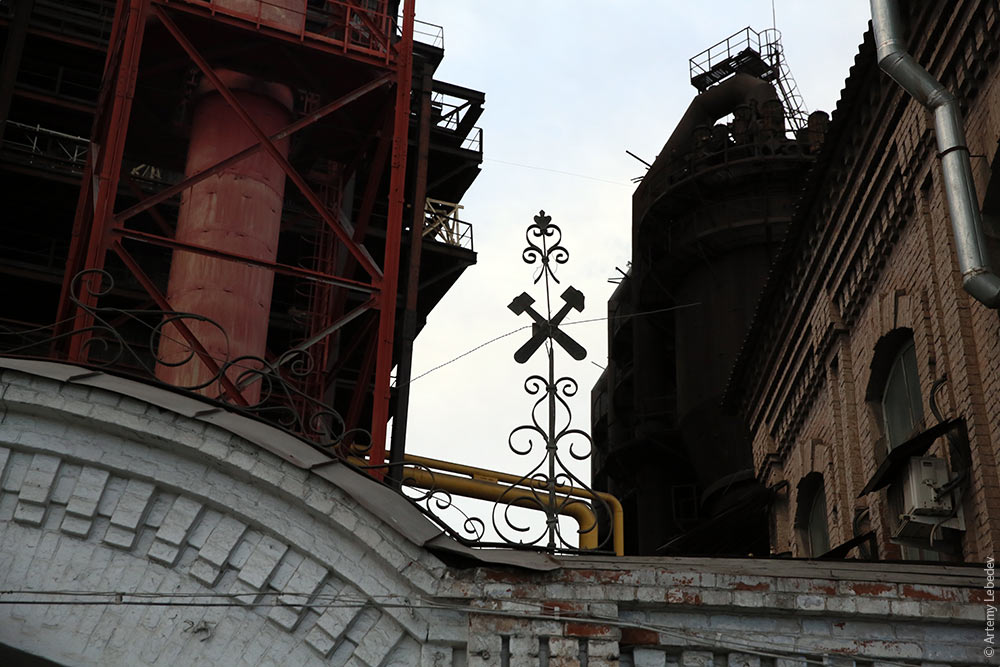 The best viewpoint in the city. Spirituality and industry. 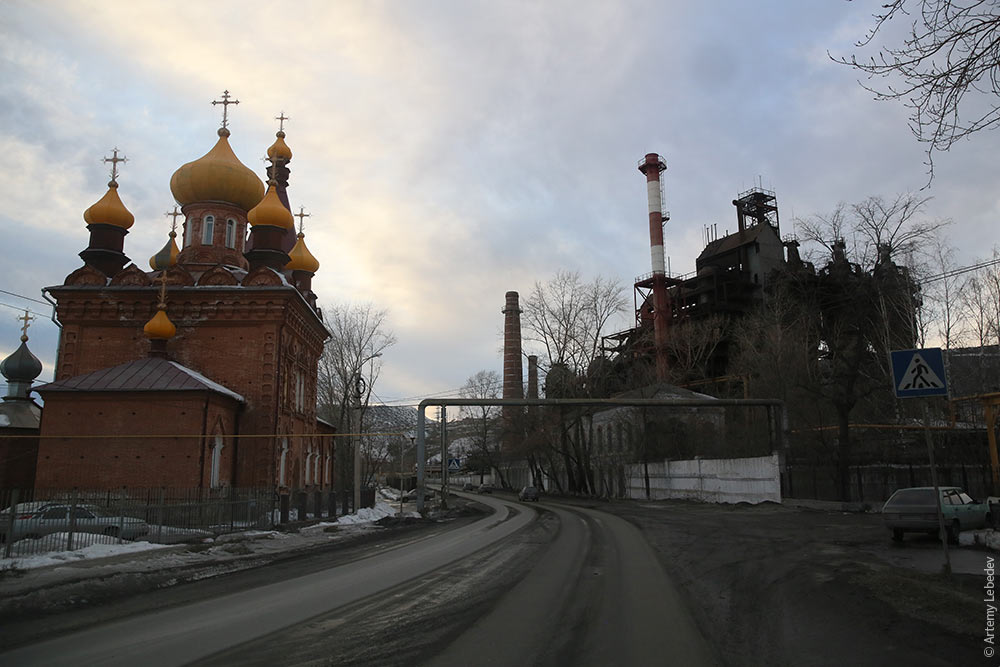 Conceptual street lights. 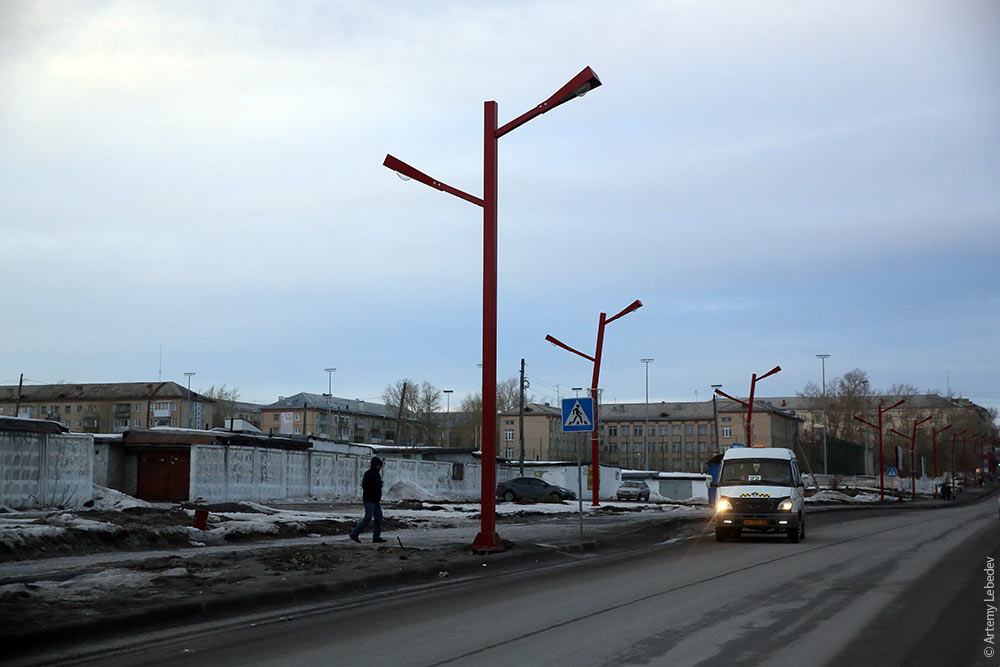 The Palace of Culture, an important landmark. 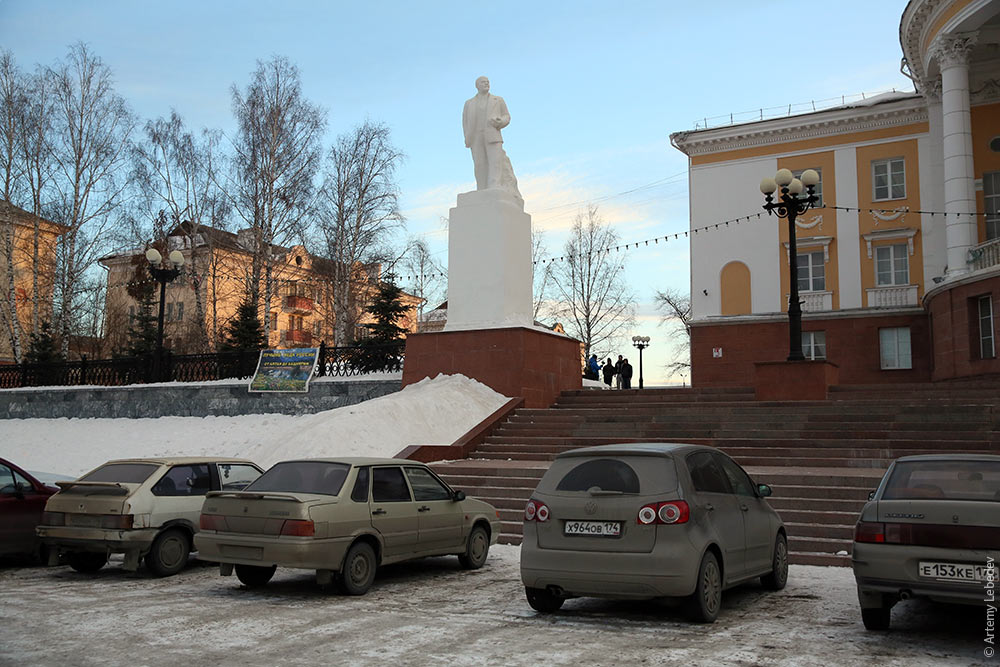 This is one of the few Stalin-era community cultural centers whose original interiors are still intact, including the plasterwork, frescoes, decor, marble and ticket hall. And it’s also never been used as a shopping center. 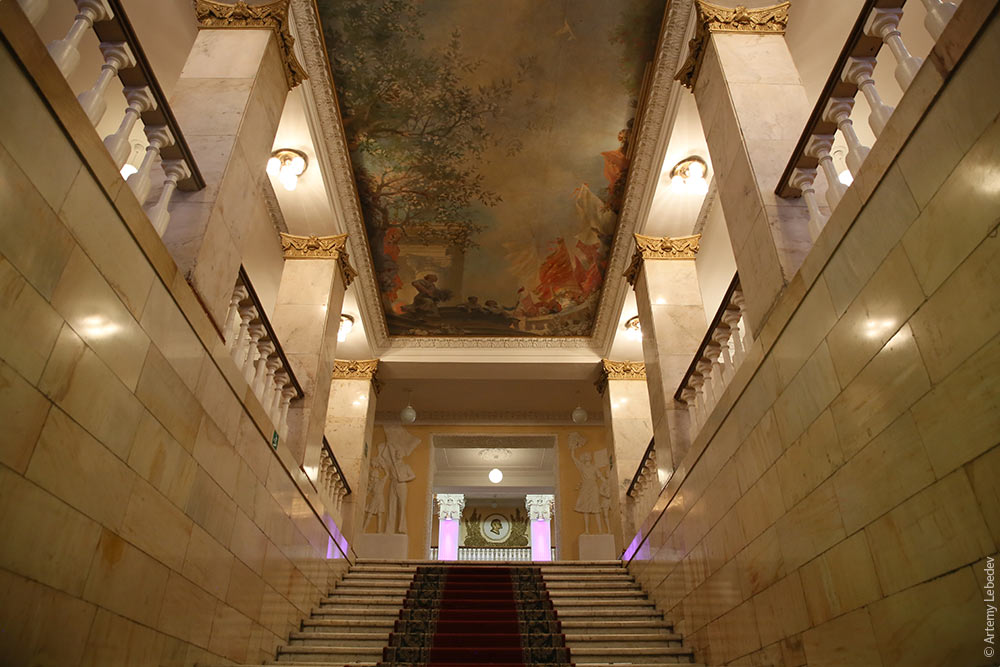 The Palace’s backyard contains original Rodin sculptures (second casting, no joke)—almost like in Stanford. 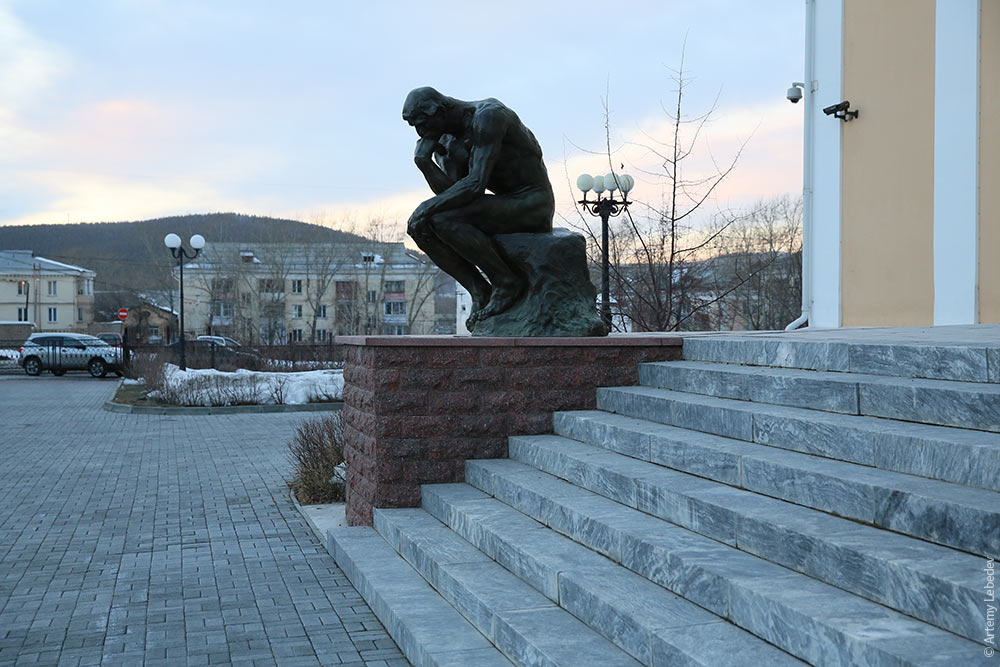 Satka has rich mineral deposits. So the cable cars stretching across the entire city are carrying minecarts full of ore, not skiers. 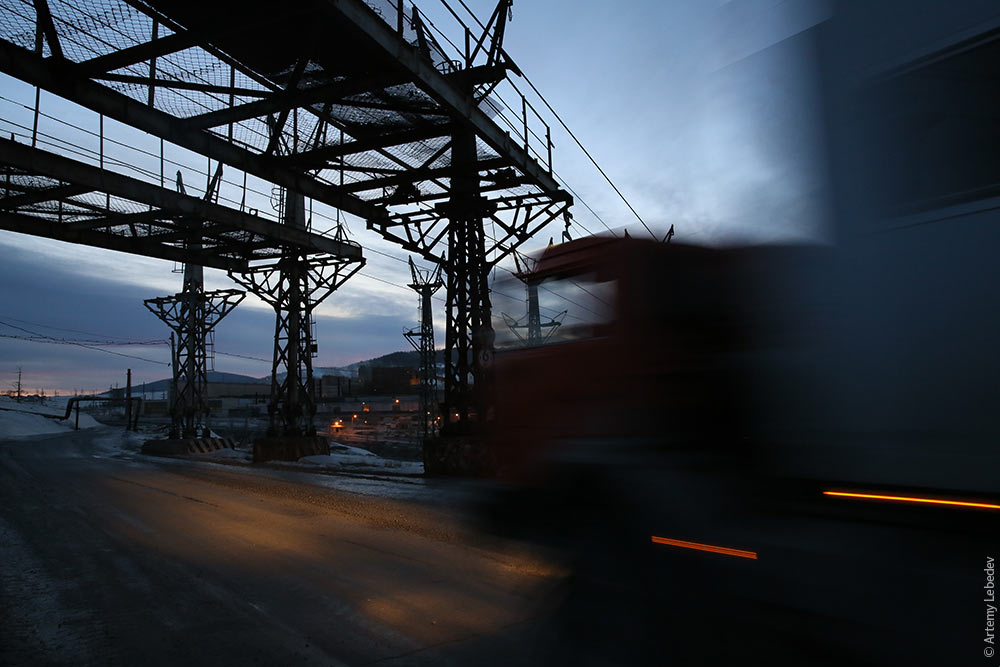 In the 19th century, deposits of magnesite—a blue fire-resistant mineral used in metal smelting—were discovered in Satka. The magnesite quarry has been the city’s most prominent industrial site ever since. 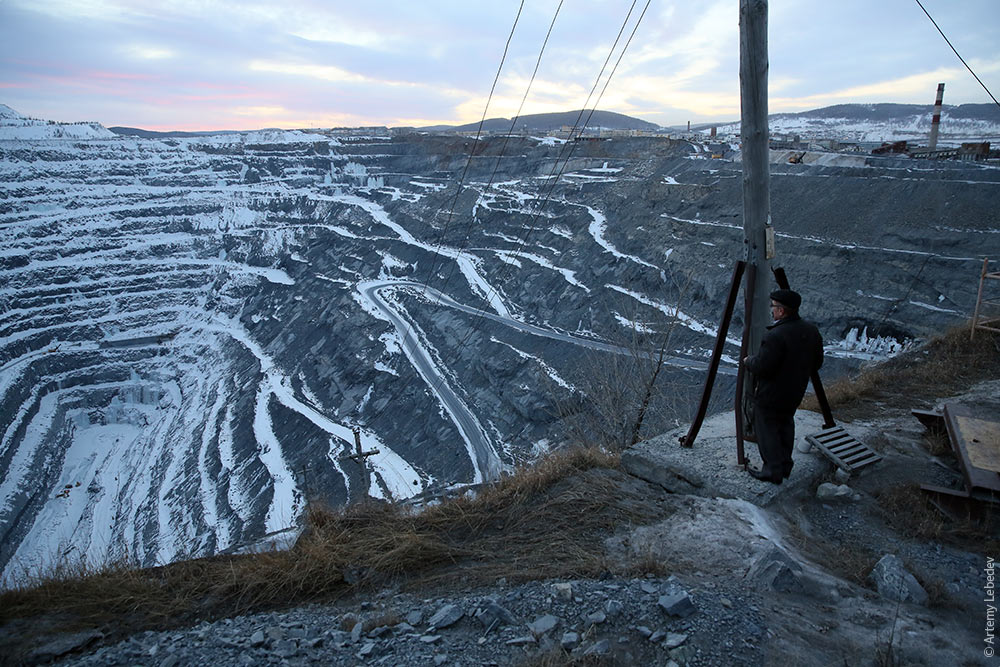 So far, Satka remains ill-equipped to receive tourists (let’s just say that no one’s built a normal hotel yet), but there’s huge potential. This is one of the most interesting and surprising cities in Russia, with plenty of not-your-run-of-the-mill details. 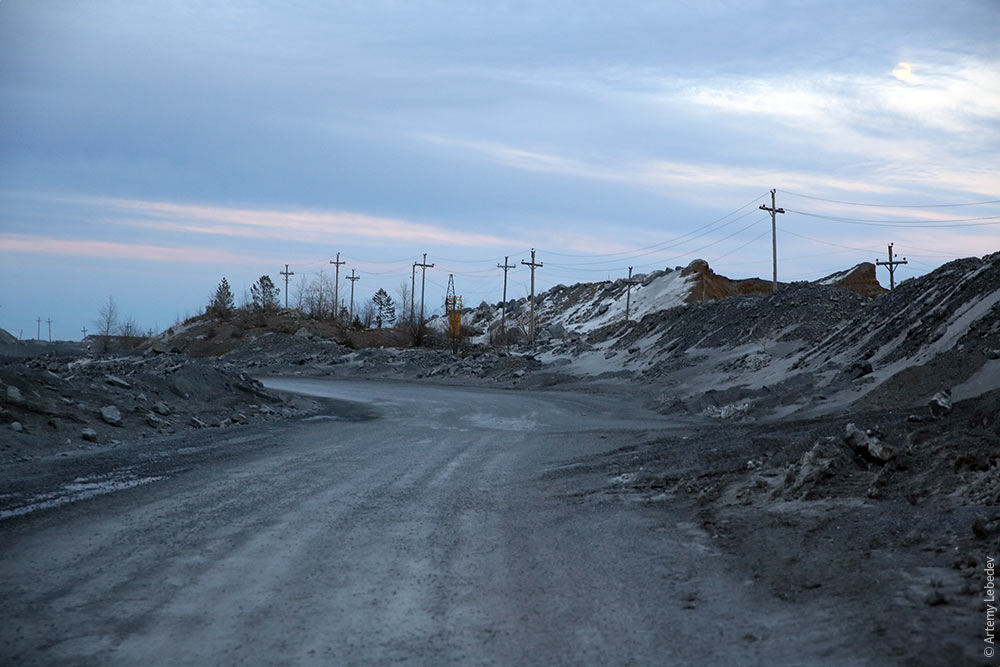 |